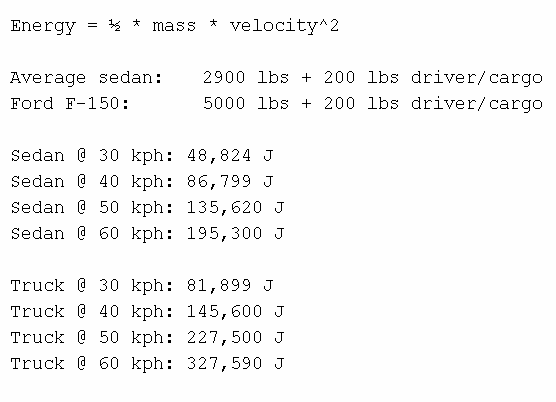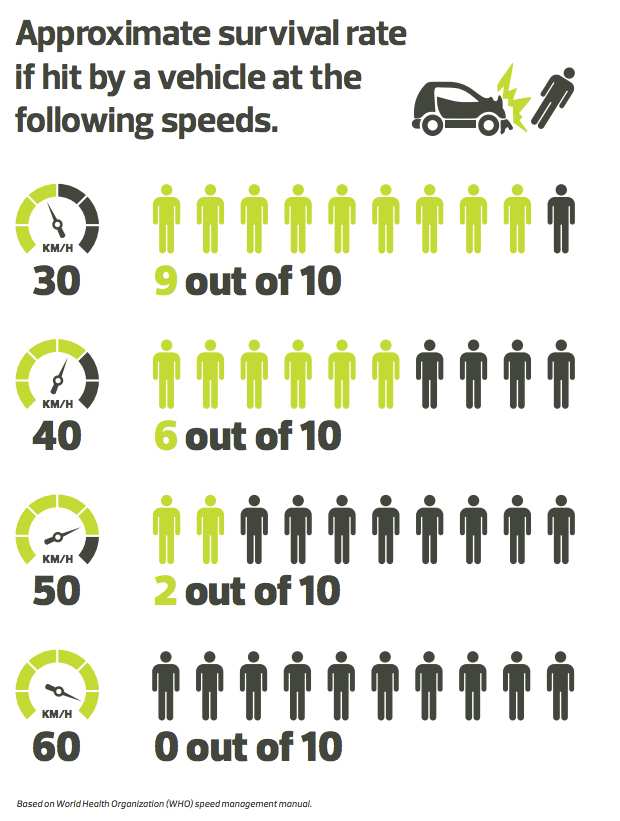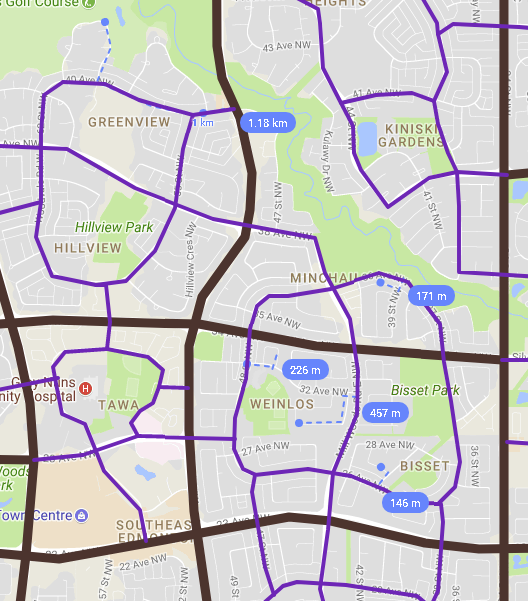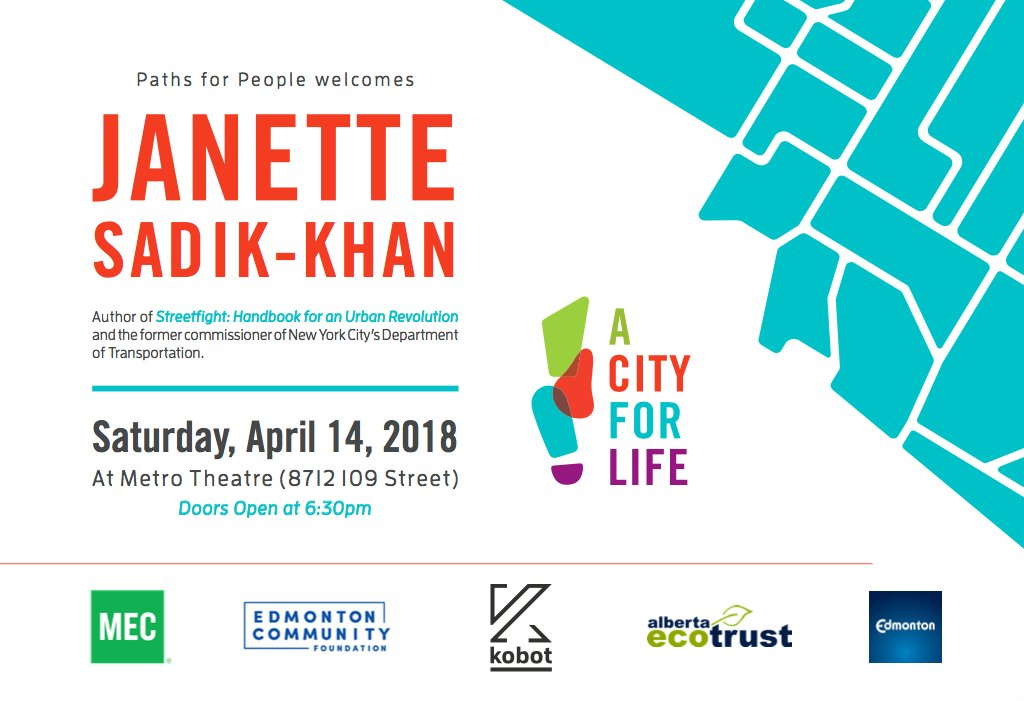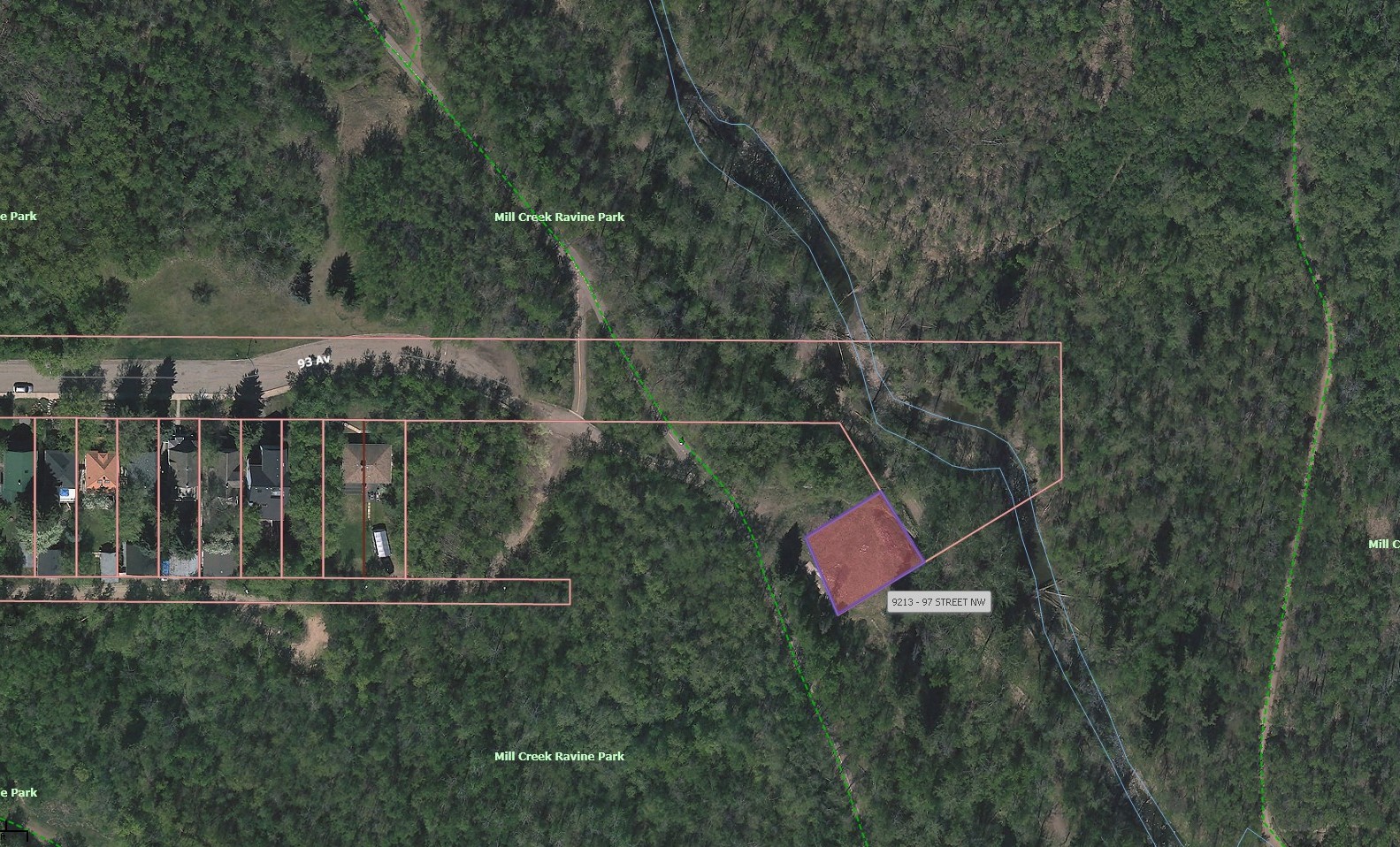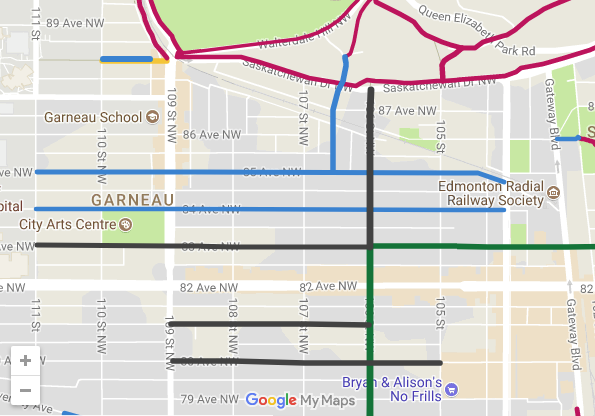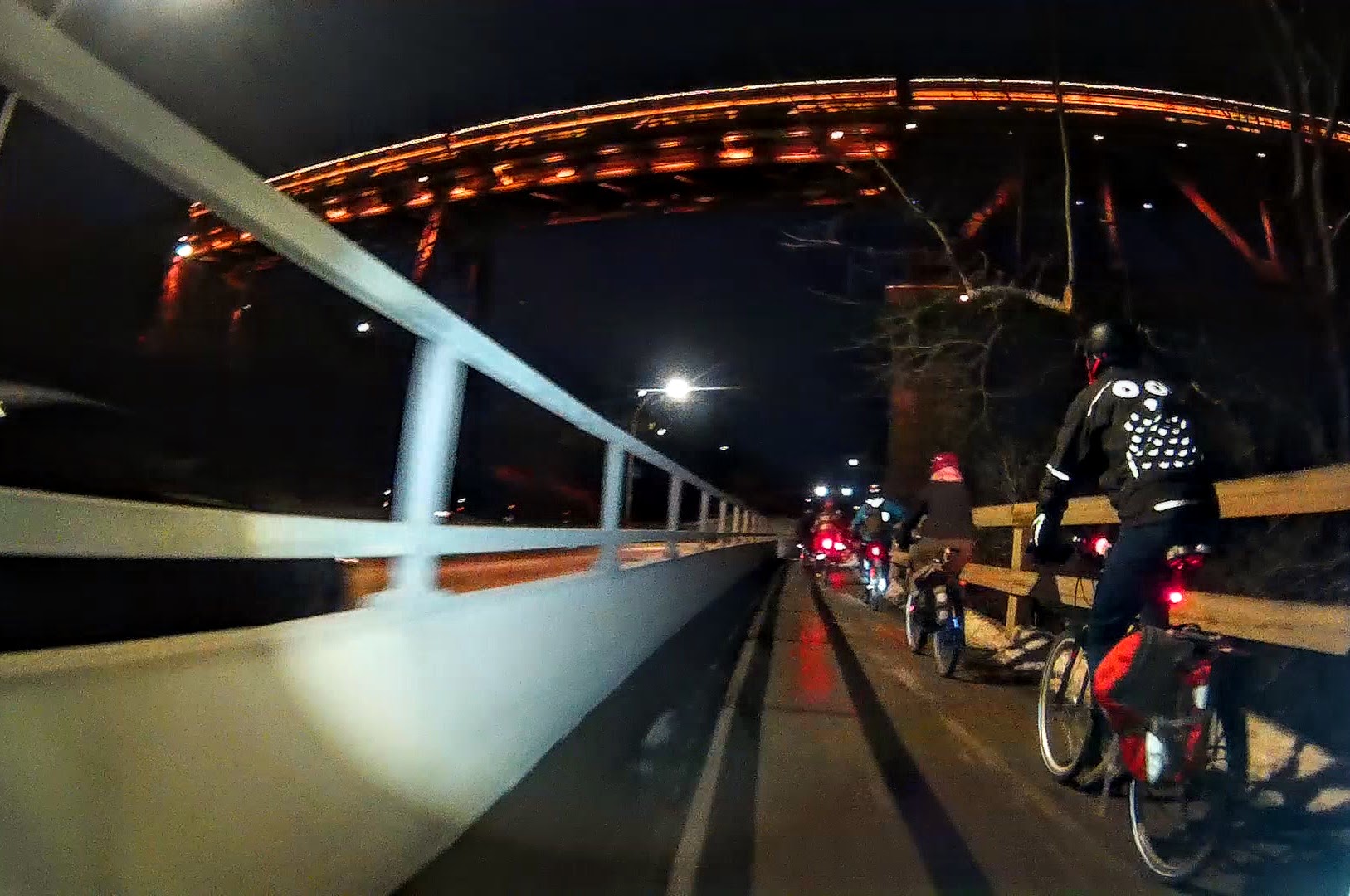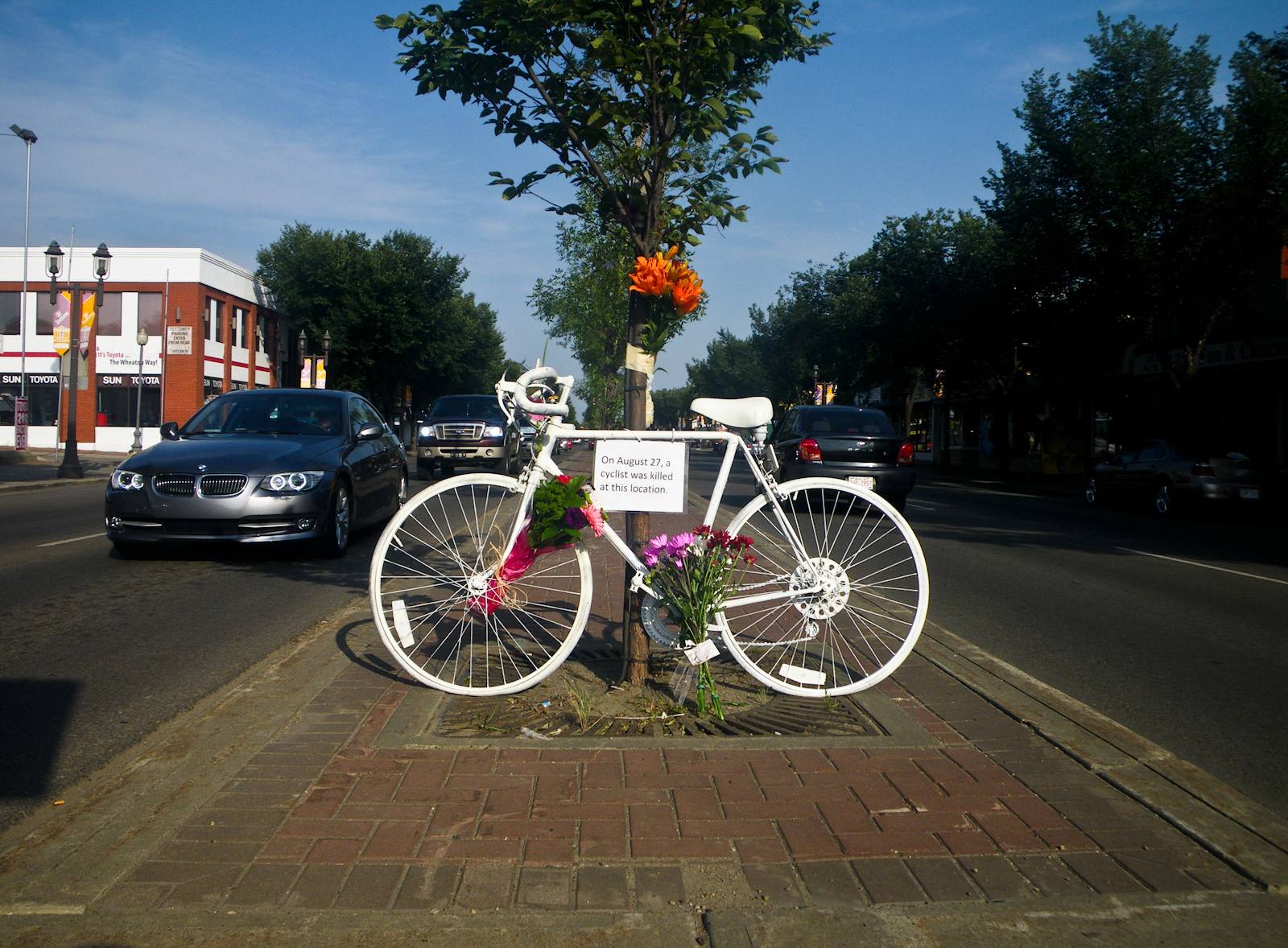A car travelling at 60 km/h has four times the energy of one travelling at 30 km/h. Put another way: being hit by a car at 60 km/h has the same energy as being hit by four cars at the same time, each travelling at 30 km/h.
Put another way: an average sedan travelling at 60 km/h has the equivalent energy to 405 bullets (9mm fired at 1300 km/h). A Ford F-150 at 60 km/h has the equivalent energy of 679 bullets.
At 30 km/h, the energy drops to just a quarter.
According to the report going to Council's Community & Public Services Committee tomorrow (April 18), 80% of Edmontonians are concerned about speeding on local streets, and 72% of Edmontonians would prefer lower residential speed limits.
Please write to your councillor today to let them know you support 30 km/h residential speed limits. You can also contact the committee members: Councillors McKeen, Henderson, Cartmell and Caterina.
Keep it brief (just a few sentences is fine), and let them know your name and neighbourhood.
There are numerous reasons why bullets can be more lethal than cars, primarily that the total energy of a moving car isn't entirely transferred to a human body when they collide. The human body gives way while the car keeps moving. So the comparison is a bit silly on the one hand; on the other hand, there are 12 times as many automobile fatalities in Canada as there are gun-related homicides.
As a society, we've largely decided to accept the risk of death and injury associated with driving, in return for the convenience and mobility that personal automobiles provide. When we drive, we impose that risk not just on ourselves, but also on those around us: people who have not agreed to that risk, and who may not benefit from it (people who aren't currently in cars).
Without giving up the convenience of driving, we can still easily reduce the risks. Driving at 30 km/h on local residential streets is an extremely effective measure to reduce the risk we impose on others.
A 30 km/h residential speed limit would make speed limits consistent and simple (rather than having to watch out for changing playground zones).
Lower speeds makes neighbourhoods quieter and more pleasant: the kinds of streets that kids (and adults!) play street hockey on, where you can take your dog for a walk comfortably, and where, if a child momentary steps off a sidewalk without looking, everyone, including a nearby driver, has time to safely react.
A 30 km/h residential speed limit is also expected to lower annual fatalities on local residential streets to 0.
Toronto and East York already has 30 km/h residential speed limits (reduced from 40 km/h several years ago), and many other cities around the world have 30 km/h speed limits on their residential streets.

How much time will it take?
In short: you've probably spent more time reading this than the impact a speed limit change will have on your daily commute.
Edmonton arterials are generally spaced about 800m between north-south roads, and up to about 1100m between east-west roads.
For most neighbourhoods, that means the maximum distance from a home to the nearest arterial roadway is about 475m.
Even in non-grid neighbourhoods like Mill Woods, for houses buried in the deepest cul-de-sacs, the maximum distance to the nearest collector roadway is still about 400m, and a maximum of about 800m to the nearest arterial along the collector.
Note that these are maximum distances. The average home isn't as far away as possible from collector and arterial roads. Making a simplified assumption that homes are about evenly spaced throughout neighbourhoods, the average distance from a home to a collector or arterial roadway is about half the maximum: 200-250m.
Travel time:
250m @ 50 km/h: 18 seconds (averaging 50 km/hr assumes that a driver is driving at full speed through multiple intersections within a neighbourhood) 250m @ 40 km/h: 22.5 seconds 250m @ 30 km/h: 30 seconds
The average change in travel time at 30 km/h, assuming the driver normally drives at a constant 50 km/h through the entire neighbourhood, is 12 seconds. (No reasonable driver maintains a constant 50 km/h through the turns and intersections of a residential neighbourhood, though, so the real time difference is likely smaller.)
The difference between 40 km/h and 30 km/h is 7.5 seconds, and just 4.5 seconds between 50 km/h and 40 km/h.
The survival rate for people hit by a car at 30 km/h is 90%. At 40 km/h, that drops to 60 per cent: four in ten people die. At 50 km/h, the survival rate is only 2 in 10. Children fare even worse: they're even more likely to die.
Tim Querengesser took to the road recently and tested the difference of driving at different speeds along 98 Ave through Cloverdale. 98 Ave is classified by the City as an arterial roadway, with a speed limit of 60 km/h. It cuts the neighbourhood of Cloverdale in half, with Accidental Beach on one side, and the Muttart Conservatory and Gallagher Park (home of the Edmonton Folk Music Festival and Edmonton Ski Club) on the other.
His result? At 40 km/h instead of 60 km/h, traversing the entire neighbourhood from one end to the other took an extra 20 seconds.
Thread:
1/ The conversation about walk safety inevitably ends up at speed and with it, time. How much time does ensuring a street is safe for people on their feet add to those commuting through it in a car?
Well, I just did the test. Read on for results. #science pic.twitter.com/Z4RcaeE0Fz
— Tim Querengesser (@timquerengesser) April 16, 2018
2/ Now, before we dive in, here's what walkability science shows. People being hit by drivers don't have to die. Nearly every pedestrian lives in a 30 km/hr collision. On the flip side, however, nearly every pedestrian dies in a 60 km/hr collision. #science. pic.twitter.com/yRR9aZkwQk
— Tim Querengesser (@timquerengesser) April 16, 2018
3/ So, to put it all to the test, I drove my fiancee's Kia Sportage from the eastern end of Cloverdale (91 Street) to the western end (98 Avenue, where it breaks away from what becomes 97 Avenue. And I timed my trip at differing speeds — 60 km/hr, 50 km/hr and 40 km/hr.
— Tim Querengesser (@timquerengesser) April 16, 2018
4/ Results: At the current speed limit of 60 km/hr on 98 Avenue, my trip took about 49 seconds. pic.twitter.com/D4JvQnDeEZ
— Tim Querengesser (@timquerengesser) April 16, 2018
5/ At 50 km/hr, the exact same trip took about 10 seconds longer — 59 seconds. pic.twitter.com/GxmcChfXhI
— Tim Querengesser (@timquerengesser) April 16, 2018
6/ And finally, at 40 km/hr, the exact same trip took about 20 seconds longer than it did at 60 km/hr, or about 68 seconds.
So there it is. Slowing traffic through a residential area to a speed that's far more survivable would add 20 seconds to a driver's commute. pic.twitter.com/qga9iM0KOL
— Tim Querengesser (@timquerengesser) April 16, 2018
7/ What does this mean? Well, it likely took you longer than 20 seconds to read this entire thread. Meanwhile, it means the difference between a survivable and livable community and one that people risk injury just to live within.
— Tim Querengesser (@timquerengesser) April 16, 2018
8/ Twenty seconds is what we need to keep in mind. How much is 20 seconds worth to you? #yegwalk #yegbike #yegtraffic #yegvisionzero
— Tim Querengesser (@timquerengesser) April 16, 2018
9/ What's incredible about 98 Avenue's development in Cloverdale is the consistency that speed is identified as a problem. Here's our area redevelopment plan, first published in 1986, or 32 years ago. https://t.co/ZWjoGzmXus
— Tim Querengesser (@timquerengesser) April 16, 2018
10/ "The volume of the unrestricted flow of traffic and its speed represents a daily problem for neighbourhood residents ..Residents have asked...the installation of a full phase traffic signal on 98 Avenue, and the reduction of the speed limit on the avenue to 50 km per hour..."
— Tim Querengesser (@timquerengesser) April 16, 2018
Please write to your councillor today to let them know you support 30 km/h residential speed limits.



